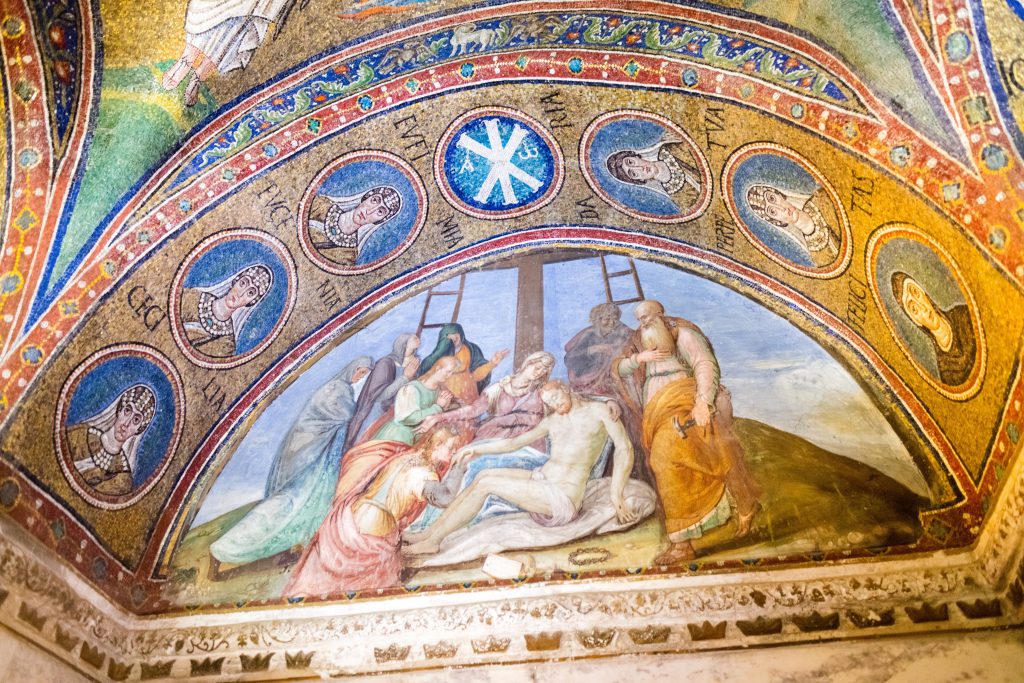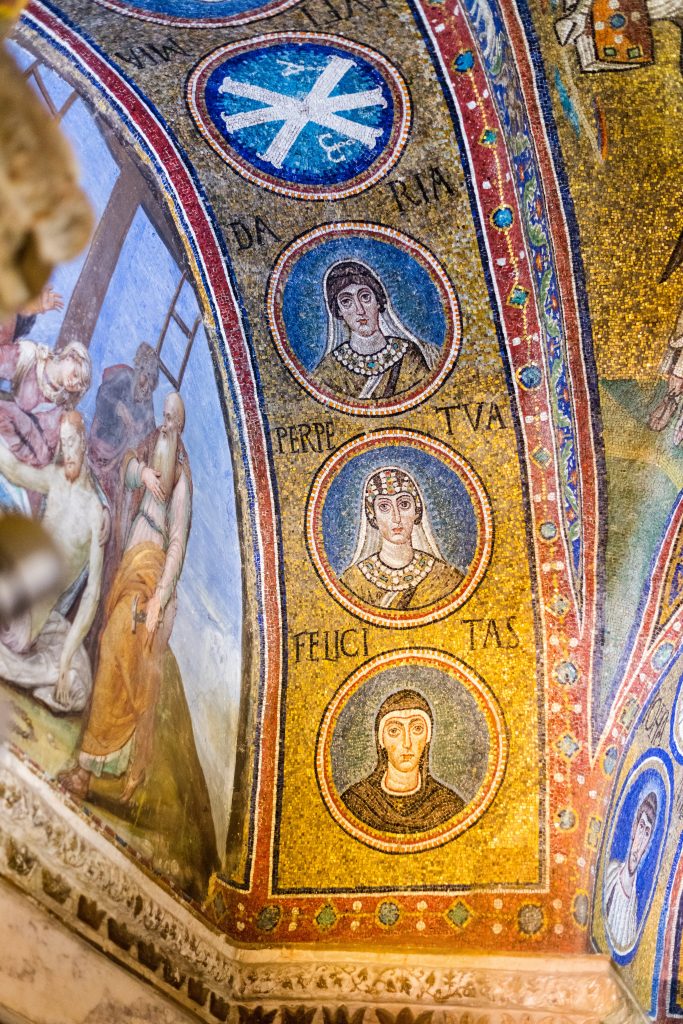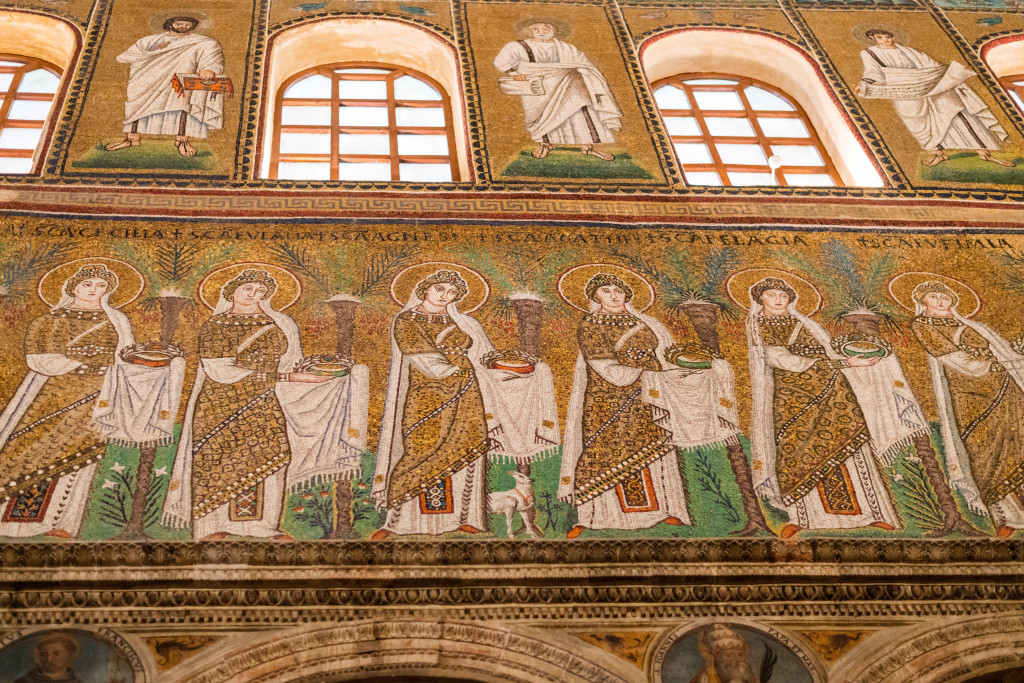Perpetua of Carthage
3rd Century Martyr
In the early third century, Perpetua – a young, educated, upper-class woman – found herself in a prison awaiting execution. While an unlikely place for a respectable Roman woman, such persecution was not uncommon for Christians in the ancient Roman world. Although the current emperor, Septimus Severus, was fairly tolerant of all gods, he required acknowledgement of the “Unconquered Sun” as the highest deity. This worship was certainly not something many Christians or Jews, including Perpetua, were willing to do, and her resistance resulted in execution.



Biography – The evidence for Perpetua’s story may come from her own words. Embedded within The Passion of Perpetua and Felicity are chapters purportedly written by Perpetua herself, recounting her experiences within the prison. If this is true, her story is the earliest written work in Latin by a woman. Other parts of the passion include chapters written by an editor (some speculate Tertullian, but this has not been proven) and a vision from Saturus, a fellow prisoner. Regardless of the authorship, this passion account recorded the martyrdom of Perpetua (and Felicitas) which would deeply move church for centuries to come.
Much of Perpetua’s experience in prison is wrapped up in familial interactions as well as several visions. Throughout her time awaiting execution, her father would visit her and beg that she recant her faith – she was, after all, shaming the entire family. In one such encounter, Perpetua responded to her father by pointing to a water pitcher in the room. Perpetua then asked, “can it be called by any other name than that which it is?” When her father replied, “no,” Perpetua responded, “so can I call myself nought other than that which I am, a Christian.”
Curiously, Perpetua was also breastfeeding her young son throughout her time in prison. While one may speculate that she was abandoning her child to face death in the arena, she also dedicated herself to his wellbeing by not passing him off to a wet nurse. Indeed, she cared well for her child, and felt a sense of relief when he was weaned from her bosom, no longer needing her for nourishment.
Perpetua also experienced four separate visions while in prison. The first and fourth regarded themes of imminent suffering in the arena, as well as triumph and celebration of the Eucharist. While Perpetua and her fellow prisoners knew that they would die, they tightly held to the bold belief that they would be resurrected after death. Perpetua’s second and third visions were of her deceased brother. During the visions, Perpetua saw her brother in distress, prayed for him, and he was healed from his ailments.
At the end of their time in prison, Perpetua and Felicitas, along with other imprisoned Christians, were sent into to the arena. When the beasts were unleashed on them but did not kill them, the women and men of this group were then executed by the sword. But such a death was a reminder to the early church that in death, there is life in the resurrection. In fact, this story was shared each day on March 7 to honor their martyrdom account. Even Augustine, about 200 years later, recounted this story in his sermons. Today, Perpetua is part of the Catholic Canon and continues to be celebrated by Christians worldwide.
Resources:
- Cohick, Lynn H., & Amy Brown Hughes, “Perpetua and Felicitas: Mothers and Martyrs.” In Christian Women in the Patristic Word: Their Influence, Authority, and Legacy in the Second through Sixth Centuries. Grand Rapids: Baker Academic, 2017.
- Fuller Seminary. “The Great Persecution and the Coming of Imperial Christianity.” https://www.fuller.edu/next-faithful-step/resources/imperial-christianity/
- The Passion of Perpetua and Felicity. Translated by W.H. Shrewing. London, 1931. https://sourcebooks.fordham.edu/source/perpetua.asp
- Marchetti, Guido. Women in the Mosaics of Ravenna. Ravenna, Italy: Opera di Religione della Diocesi di Ravenna, 2015.
